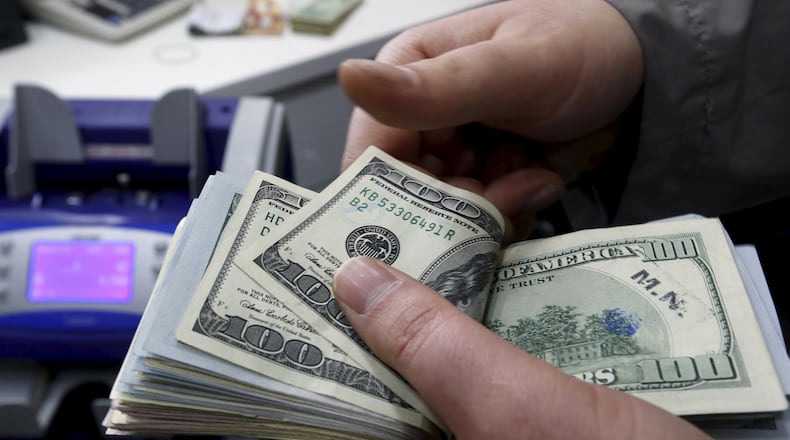It's Tax Day, that annual date when your share of the cost of government is partially revealed.
I say "partially" for a few reasons. First, taxes only cover part of the cost of government in an era of perpetual deficits. The Tax Foundation calculates a "Tax Freedom Day" each year to illustrate how much of the year the average American works simply to pay his or her federal, state and local tax bill: This year's national-average date is April 24. (In Georgia, ours is today , which is earlier than those of 33 states.) But the foundation adds a second calculation that shows when that day occurs once the cost of federal borrowing is included:
That puts us at May 8, two weeks later. That's a little more than one-third of the year. Do you feel like one-third of what you have in your life comes from the government?
The second reason I say "partially" is because I suspect most Americans, when completing their tax filings, focus on the bottom line: What they owe the government or the government owes them. But that obscures what their actual income-tax bill is, because they've also been making withholding payments from each paycheck throughout the year. For anyone who doesn't pay attention to either those withholding payments or their actual total income tax, just the check they'll write or receive upon filing, that obscures how much government costs them.
Third, income taxes are only part of our total tax bills. With a Tax Freedom Day of April 24, the average American works 114 days to pay for government. But only 43 days -- a little over one-third of the total -- are required to pay federal, state and any local income taxes. The next-biggest chunk of days is for payroll taxes: 26 days, or almost a full month. Sales and excise taxes consume another 15 days; corporate income taxes (which we all pay in the form of lower wages, higher prices or lower returns on our investments) take up 12 days; property taxes, 11 days; and all other taxes, seven days. So even if you do pay attention to your total income taxes paid -- at all levels of government -- you're seeing less than 40 percent of what you actually send to public coffers.
The fourth reason gets back to withholding taxes. Although we tend to celebrate tax-refund checks, they actually represent money we've loaned to the government on an interest-free basis. The data crunchers at FiveThirtyEight.com have built a calculator to show you just how much money you had to forgo in either interest you weren't paid on a savings account, interest you had to pay on credit-card debt, or returns you didn't get on an investment you didn't make -- all because the government was holding money to which it wasn't actually entitled.
The image above is a screen capture that doesn't work, but if you click this link you can enter your own information and see what you didn't realize you didn't get.
Given all that, it's no wonder Tax Day falls seven months before Election Day rather than, say, a week before it.
Of course, you could consider sending a letter to the IRS and your lawmakers along the lines of this annual missive from a former Cabinet member :
About the Author
Keep Reading
The Latest
Featured



